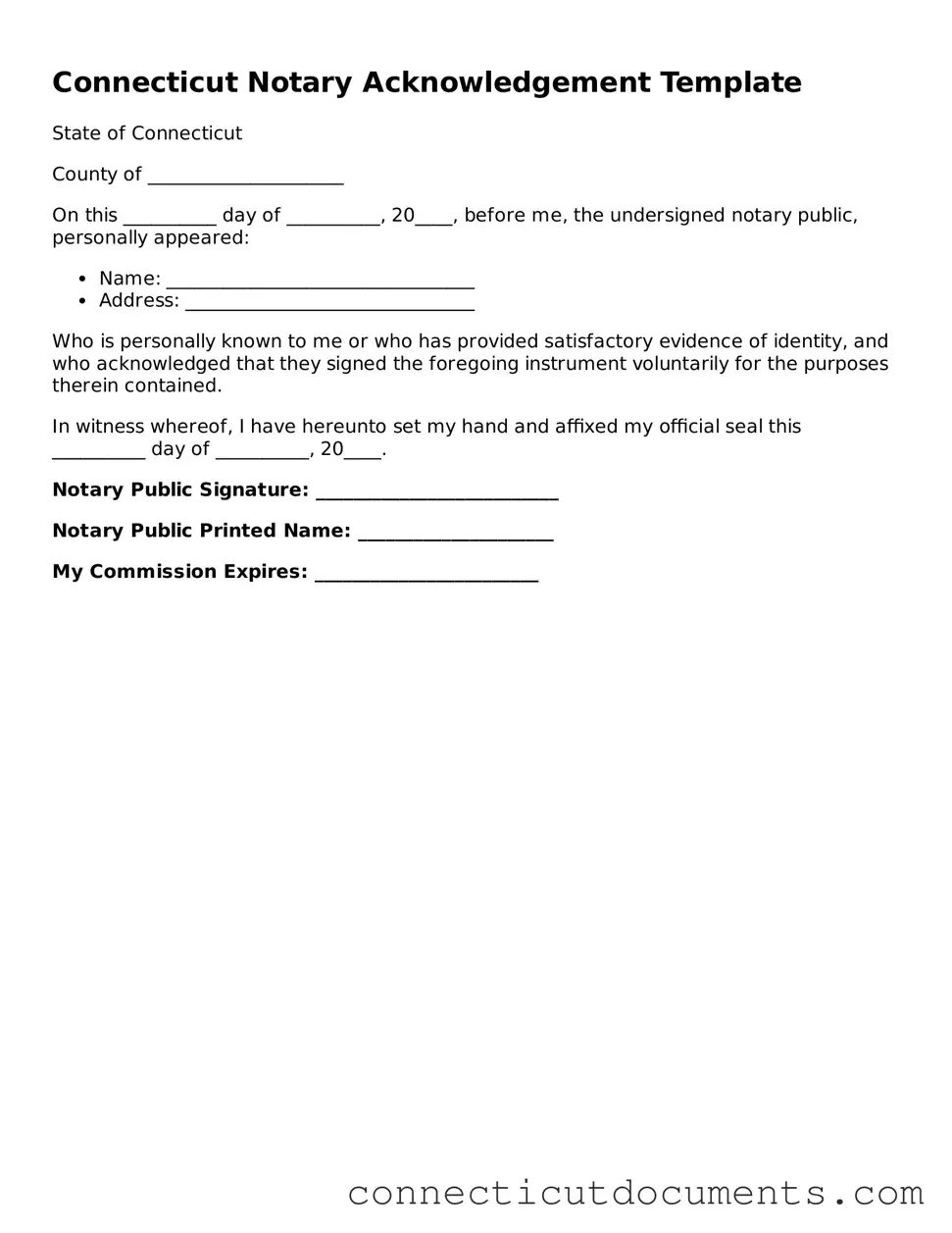What is a Connecticut Notary Acknowledgment form?
The Connecticut Notary Acknowledgment form is a legal document used to confirm that a specific individual has signed a document in the presence of a notary public. This form serves to authenticate the identity of the signer and ensures that the signature is genuine. It is commonly used in various legal and financial transactions, including real estate documents, contracts, and affidavits.
Who can serve as a notary public in Connecticut?
In Connecticut, a notary public must be at least 18 years old, a resident of the state, or a non-resident who works in Connecticut. They must also complete an application process, which includes a background check and, in some cases, a training course. Once appointed, a notary public has the authority to perform notarial acts, such as acknowledgments, oaths, and affirmations.
What information is required on the acknowledgment form?
The acknowledgment form typically requires several key pieces of information. This includes the name of the person signing the document, the date of the signing, the name of the notary public, and the notary’s official seal. Additionally, the form may include a statement confirming that the signer appeared before the notary and acknowledged that they signed the document willingly and without coercion.
Is it necessary to have a notary acknowledgment for all documents?
No, not all documents require a notary acknowledgment. However, many legal documents, especially those involving property transfers or significant financial transactions, often do. It is advisable to check the specific requirements for the document in question, as some entities or jurisdictions may mandate notarization to ensure the document's validity.
How does one complete a Connecticut Notary Acknowledgment form?
To complete the form, the signer must appear in person before the notary public. The notary will verify the signer's identity, typically through a government-issued photo ID. After confirming the identity, the signer will be asked to sign the document in the presence of the notary. The notary will then fill out the acknowledgment form, including their signature and seal, to finalize the process.
Can a notary public refuse to notarize a document?
Yes, a notary public has the discretion to refuse to notarize a document. This can happen if the notary suspects that the signer is being coerced, if the signer cannot provide valid identification, or if the document does not meet legal requirements. Notaries are responsible for ensuring the integrity of the notarization process and must act in accordance with state laws.
How long is a notary acknowledgment valid in Connecticut?
A notary acknowledgment does not have an expiration date in itself; however, the validity of the document being notarized may vary. For instance, certain legal documents may have specific time frames within which they must be filed or acted upon. It is essential to be aware of these timelines to ensure the document remains effective.
Where can I obtain a Connecticut Notary Acknowledgment form?
Connecticut Notary Acknowledgment forms can typically be obtained from various sources. Many legal stationery stores, online legal document providers, and government websites offer templates. Additionally, local notaries may have forms available for use. It is important to ensure that the form used complies with Connecticut state laws and regulations.
